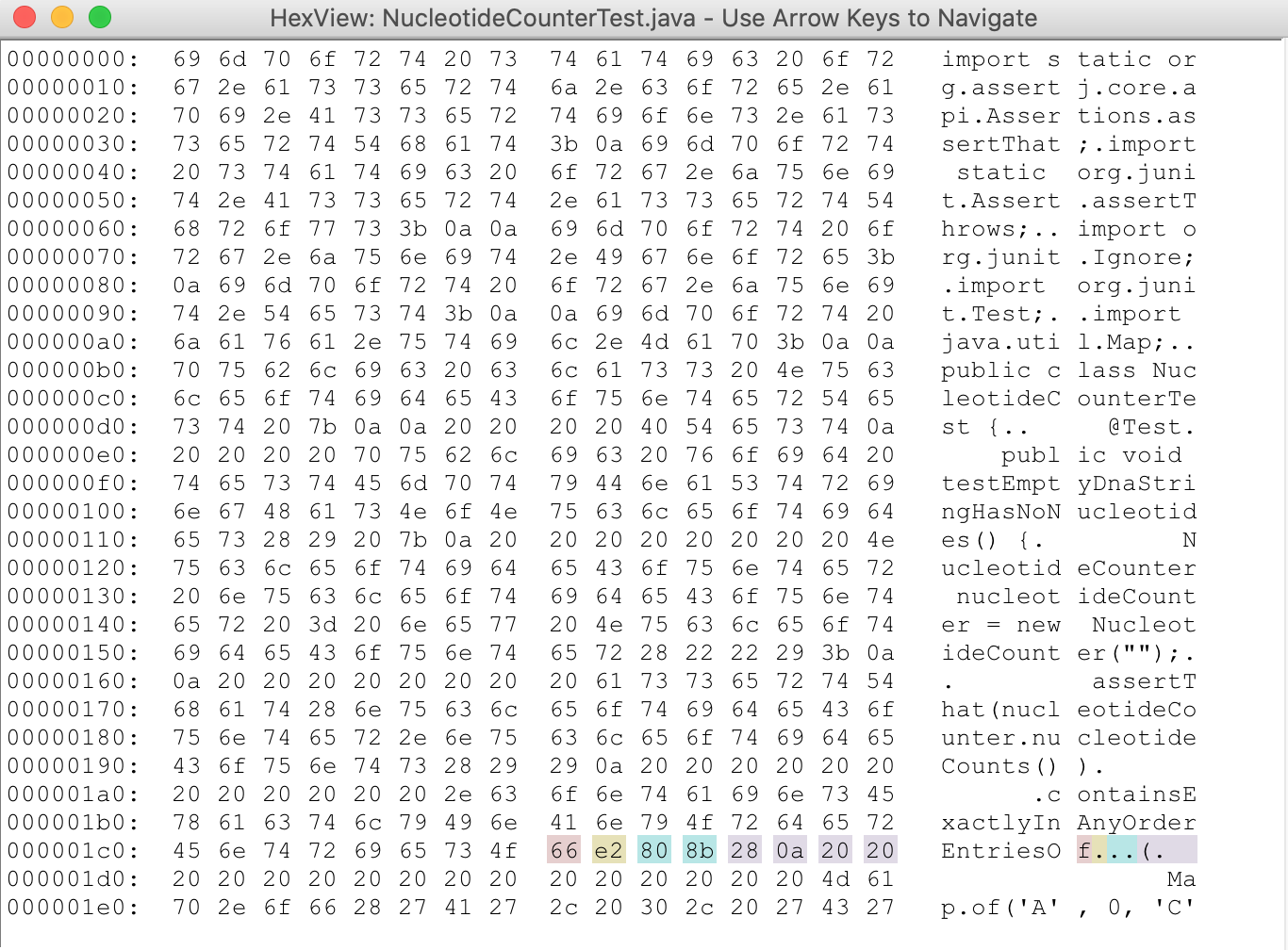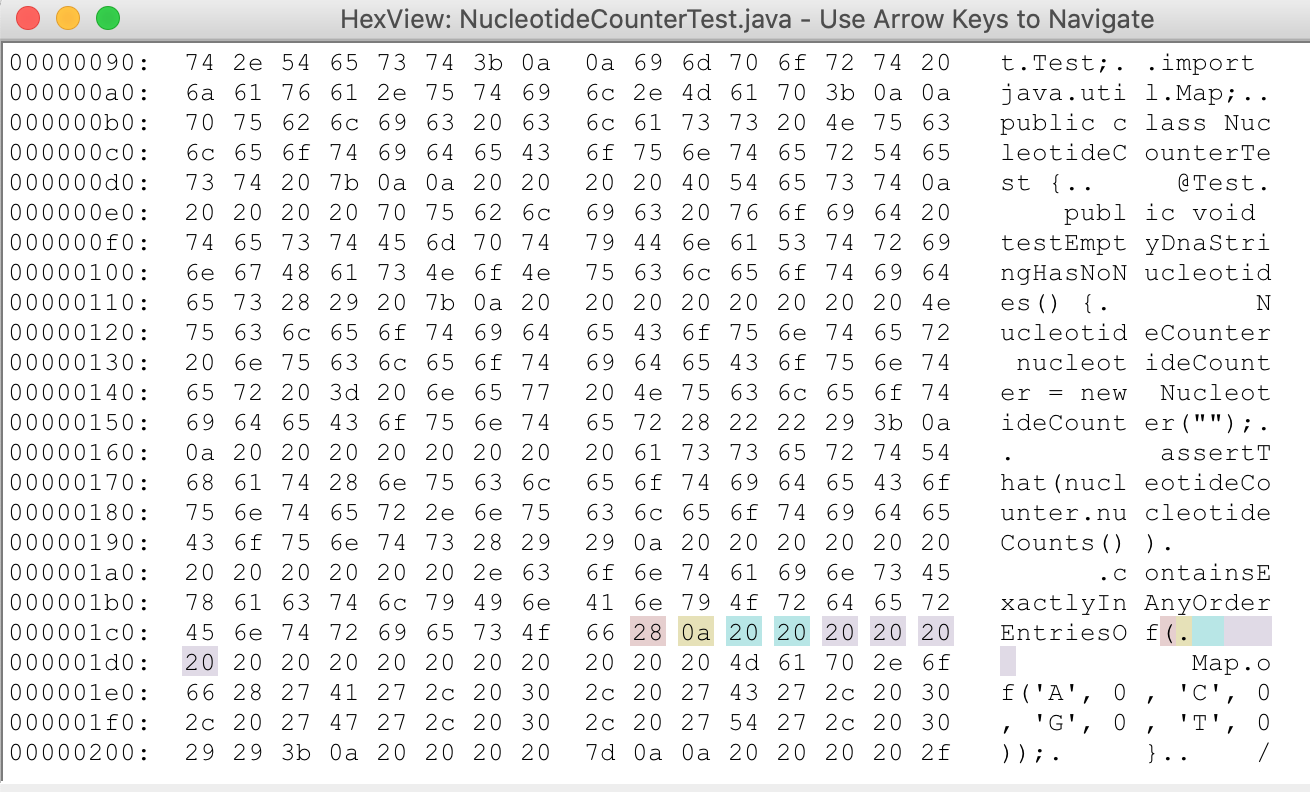Zero Width Space
I was working on an open source project recently and came across a couple issues that contained [ZWSP]
displayed in the test files. The [ZWSP] was only displayed in the IntelliJ IDE. Eclipse, Atom and
vim showed no issues with the code. The [ZWSP] stands for zero-width space. It was breaking the test file
and there were multiple issues in the github repository documenting it.
I found nine zero-width space characters in the unicode characters table and there may be more.
| Character | Unicode | Hex |
|---|---|---|
| Zero-width space | U+200B | 0xe2 0x80 0x8b |
| Zero-width non-joiner | U+200C | 0xe2 0x80 0x8c |
| Zero-width joiner | U+200D | 0xe2 0x80 0x8d |
| Left-To-Right Mark | U+200E | 0xe2 0x80 0x8e |
| Right-To-Left Mark | U+200F | 0xe2 0x80 0x8f |
| Left-To-Right Embedding | U+202A | 0xe2 0x80 0xaa |
| Right-To-Left Embedding | U+202B | 0xe2 0x80 0xab |
| Word joiner | U+2060 | 0xe2 0x81 0xa0 |
| Zero-width no-break space | U+FEFF | 0xef 0xbb 0xbf |
Zero-width characters are non-printing characters that are not displayed by most applications. They are Unicode characters, typically used to mark possible line breaks or join/separate characters in writing systems that use ligatures. They are not removed if the text is formatted, copied or pasted. It’s really hard to detect them without special tools. It most likely happened from copy and pasting code from the AssertJ API.
I used a tool called HexView to view the hexidecimal format of the file and inspect for it.

HexView allowed me to inspect the code using the column on the right. As you can see, it is not the IDE or editor,
the value is in the actual code. I removed the hex value
e2 80 8b

It was interesting to note that IntelliJ was the only IDE or editor to pick up the zwsp. Users that did not use IntelliJ experienced no issues.
The ability to use invisible characters with no width has serious security implications. Users could create
usernames, email addresses and websites that look identical to a human, but different to computers.
Luckily, zero-width spaces are prohibited in email addresses and domain names. See
homograph attack for
an example. Zero-width spaces can hide an encoded binary message in a piece of text.
String -> byte -> bit -> 1 -> ZWSP and 0 -> ZWNJ. They can be added to sensitive documents, hidden in
different places for each of the recipients, creating a unique finger print to identify the source.
This reminded me of hidden dots and values produced by printers. Surely, there is a tool to inspect for these. Insert DEDA, created from the researchers of Forensic Analysis and Anonymisation of Printed Documents. I’m not sure how valuable or effective it is but I will dig into it.